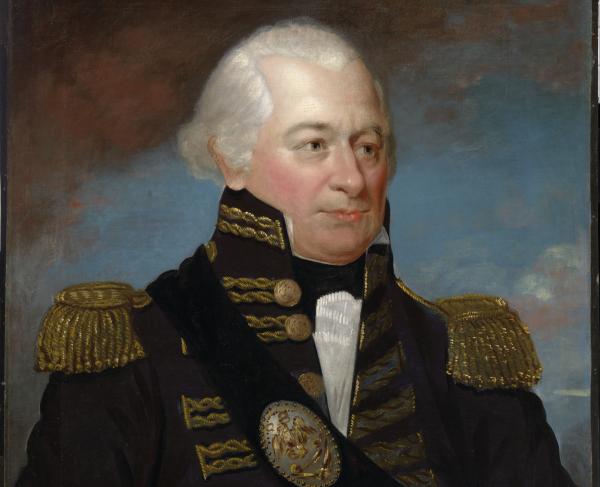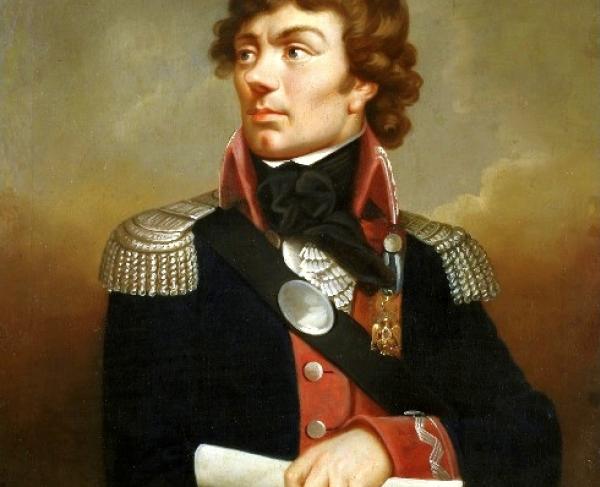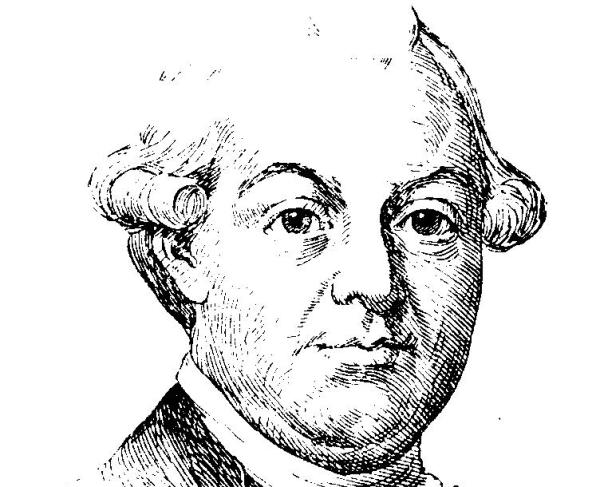James Wilkinson

James Wilkinson was born on March 24, 1757, in Calvert County, Maryland. He was 18 years old and studying medicine at the University of Pennsylvania when the Revolutionary War broke out in 1775. He left his studies and enlisted in the Continental Army under Thompson’s Pennsylvania Rifle Battalion just in time for the Siege of Boston. That winter he was commissioned a captain and became an aide-de-camp to Major General Nathanael Greene. After the British were driven from Boston, Wilkinson joined the staff of Major General Benedict Arnold, who was fighting in Canada. He was knocked out of commission for a few months with sickness but came back that fall with a promotion to Major and was placed on the staff of Horatio Gates.
Wilkinson followed Gates in December to Washington’s army in Pennsylvania in December of 1776. As Gates left Washington’s army to go to Congress and argue for Washington’s job, Wilkinson decided to stay with Washington and would be a witness to the crossing of the Delaware River and the attack on Trenton, a major turning point in the Revolutionary War. Writing in his memoirs 40 years after the event, Wilkinson noted with pride that, “I was one of the little band who faced the storm, when the summer soldier and sunshine patriot hid their heads.”
After the Trenton and Princeton campaign, Wilkinson was promoted to Lieutenant Colonel and remained on Gates’ staff, with whom he formed a close bond. He was present at the Battles of Saratoga and had the honor of delivering news of the major victory to the Continental Congress, then convening in York, Pennsylvania. Wilkinson, though, took his time arriving to Congress, stopping to visit with friends and delaying giving the official written report to Congress until November 3, 1777. Gates recommended that Congress confer on Wilkinson a brevet promotion to Brigadier General, which was done, much to the disgust and consternation of the officers of higher rank.
Along the way to the Congress, Wilkinson leaked information about correspondence between Major General Thomas Conway and Horatio Gates about their desire to replace George Washington as Commander-in-Chief. The months of intrigue that followed became known as the Conway Cabal. When Gates eventually learned that Wilkinson was behind the leak, Gates rebuked him and Wilkinson challenged Gates to a duel, which was called off at the last minute. Wilkinson ultimately resigned from the Continental Army in March of 1778. He would serve another stint as Clothier General for the Continental Army from 1779 to 1781.
After the Revolutionary War, in 1784, Wilkinson moved to the Kentucky territory. He advocated for an independent Kentucky and traveled to New Orleans to engage in talks with the Spanish in Spanish-controlled New Orleans. He was successful in opening trade on the Mississippi River but became a paid agent of the Spanish Empire. In secret communications, he was referred to as “Agent 13.” As Kentucky debated whether to break off from Virginia and join the American Union as a state, Wilkinson floated the idea of breaking from Virginia and joining the Spanish Empire. The Spanish interest in maintaining power in this region became known as the Spanish Conspiracy. Ultimately the ruse failed, and Kentucky ended up joining the United States as the 15th state.
In 1791, Wilkinson returned to the service of the United States Army to fight in the Northwest Indian War. He was commissioned a lieutenant colonel In the 2nd US Infantry. After the defeat at the Battle of Wabash, the American Army was reorganized, and Major General “Mad” Anthony Wayne became the American commander and Wilkinson was promoted to Brigadier General and named second in command. The relationship between Wilkinson and Wayne soured and Wayne began to investigate Wilkinson’s ties to the Spanish government. Wilkinson was still being paid by the Spanish for information, but before Wayne could court-martial Wilkinson, Wayne died in 1796.
When Wayne died, Wilkinson was named the commander of the United States Army. During the Quasi-War with France in 1798, Wilkinson served briefly under George Washington again and Alexander Hamilton.
In 1805, Wilkinson became the Territorial Governor of Louisiana after the Louisiana Purchase from the French. In this position, he became an accomplice to Vice President Aaron Burr’s conspiracy to set up a separate country in the Texas territory. As the conspiracy began to unravel, Wilkinson betrayed Burr in order to save himself. He showed President Thomas Jefferson that Burr alone was guilty and by providing a secret letter that was written by Burr to Wilkinson. However, Wilkinson had altered the letter to clear his own name. As it was discovered that Wilkinson had tampered with the evidence, Burr was acquitted of treason. Wilkinson’s conduct at the trial of Burr caused President James Madison to court-martial the commanding American general, but Wilkinson was acquitted of any wrongdoing.
During the War of 1812, Wilkinson was made a major general and saw action in the northern theatre of war. During the war, he was again court-martialed and again was acquitted before being discharged from the army in 1815.
In 1816, Wilkinson published his 3 volume memoirs (“Memoirs of My Own Times”) to try and clear his name. He then traveled as an envoy to Mexico City to attempt and get a land grant from the newly formed Mexican government. Wilkinson passed away while in Mexico City on December 28, 1825, at the age of 68. He was buried in St. Michael's Basilica or Iglesia de San Miguel Arcangel in Mexico City.
Historians have judged Wilkinson harshly for his treasonous work as an agent for the Spanish empire and for his involvement in numerous schemes to profit himself. Theodore Roosevelt described Wilkinson as “In all our history, there is no more despicable character.”
Related Battles
330
1,135


